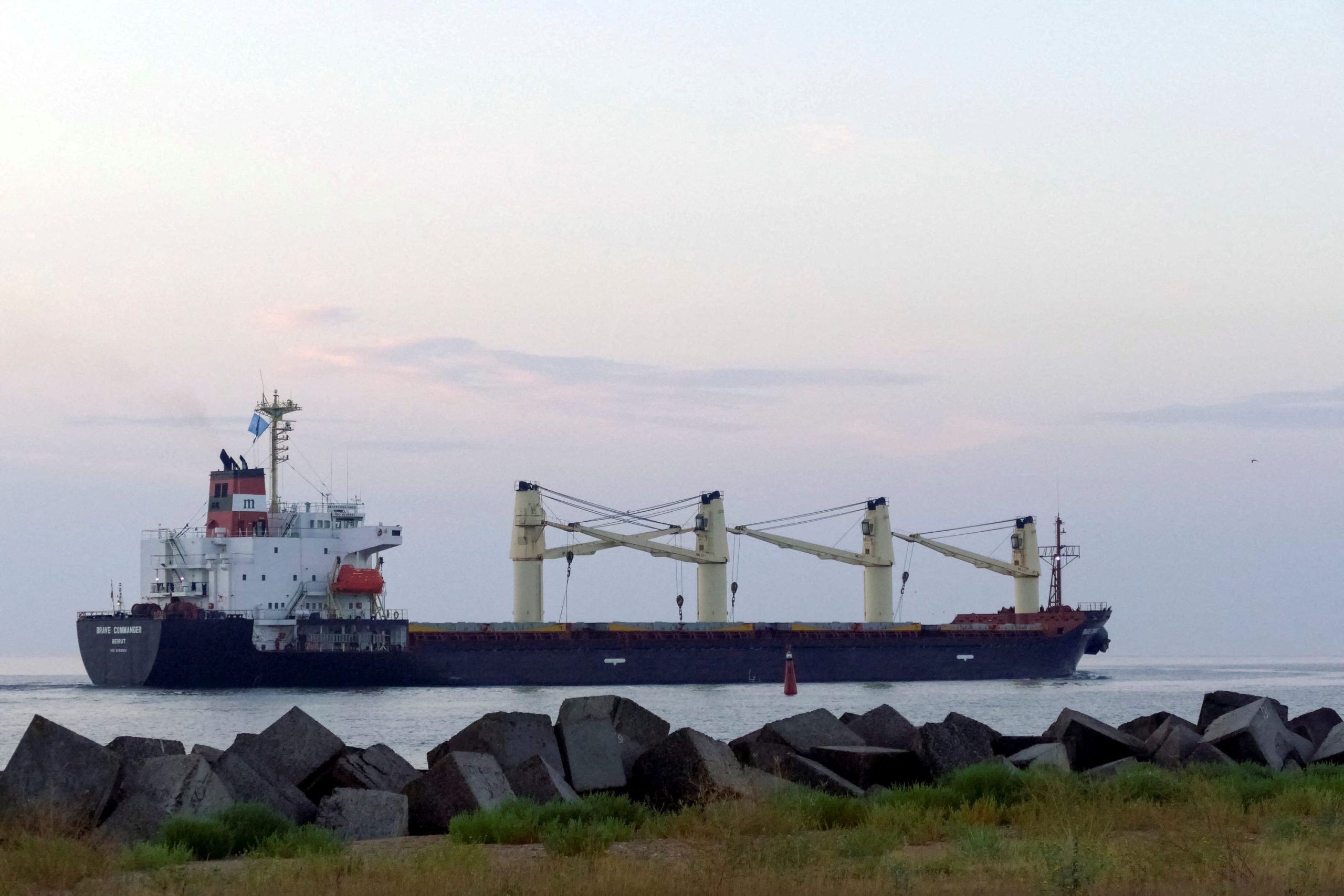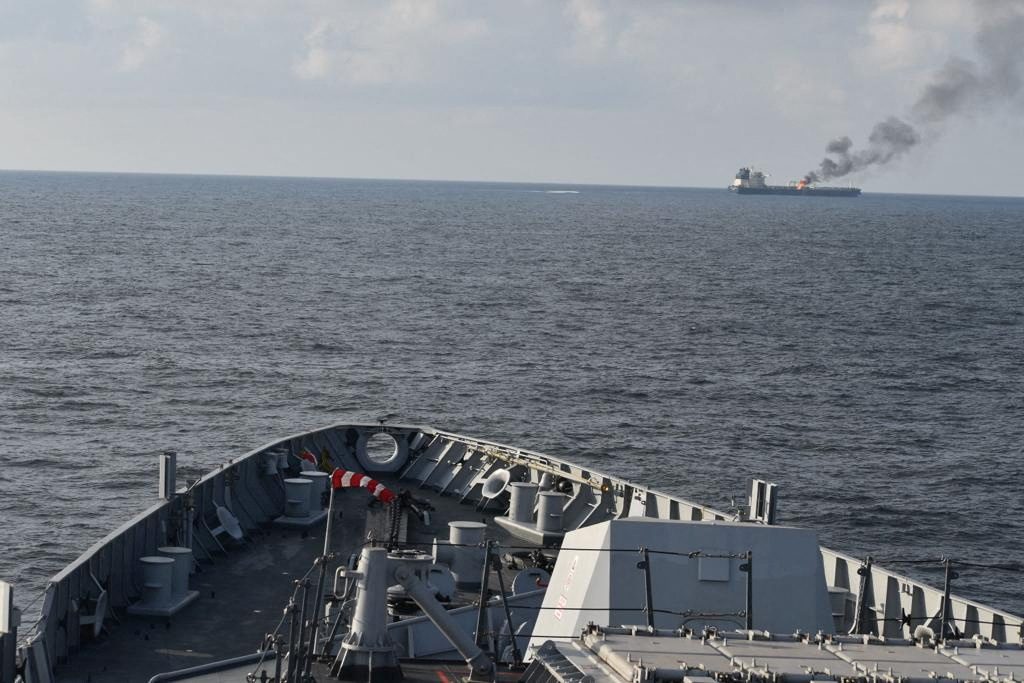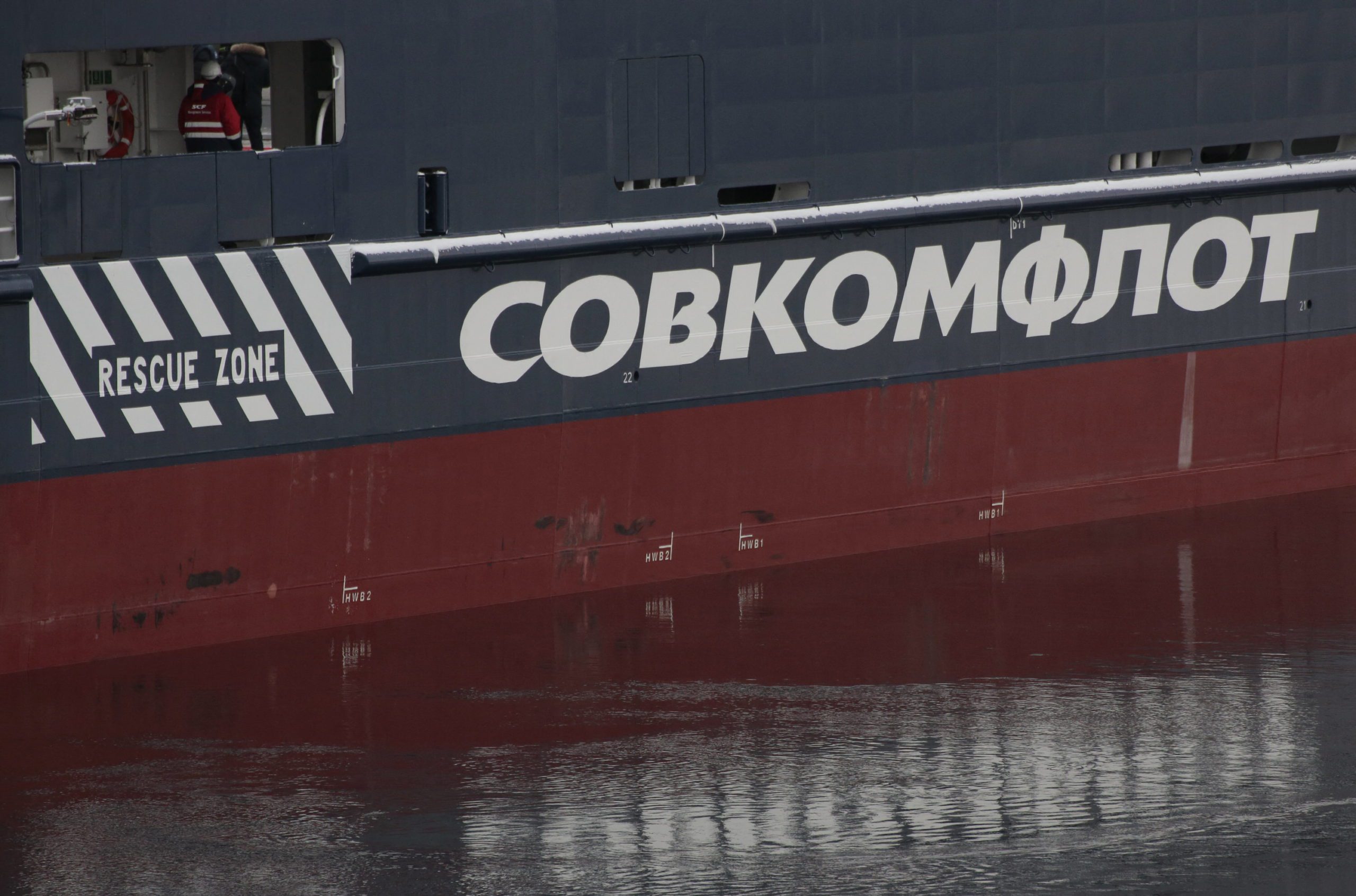By Salvatore R. Mercogliano, Ph.D. –
When Russia invaded Ukraine early on February 24, 2022, many predicted a short conflict. Russia drove on the Ukrainian capital of Kyiv from Belarus, while other forces took over the Donbas region with the aim to annex these territories and seize a land bridge to Crimea. The former had been obtained by Russia in 2014. At sea, elements of the Russian Black Sea Fleet, based in the Crimean port of Sevastopol, and led by the Slava-class cruiser Moskva, set sail into the Gulf of Odesa to cut Ukraine off from the rest of the world by sea. Elements of the Russian fleet demonstrated off the coast and feigned an amphibious assault against the major port of Odesa, while other units seized Zmiinyi (Snake) Island and a series of Ukrainian oil platforms.
Ukraine Naval Counterattacks
Ukrainian counterattacks halted the drive on Kyiv, and defenses in Mariupol slowed the offensive linking up Crimea. Snake Island proved difficult for the Russians to maintain, while Ukraine mined its coast to prevent any Russian landings, leading to the loss of the Estonian-owned cargo ship Helt, being used by the Russians. A coordinated strike by Ukraine hit the Russian cruiser Moskva with a pair of Neptune surface-to-surface missiles, a ship beset by maintenance and operational issues, and sent her to the bottom of the Black Sea, on April 14, 2022. This followed on the heels of a Ukrainian strike against the port of Berdyansk that destroyed a Russian supply ship at the pier, Saratov, and damaged two Alligator-class landing ship tanks.
In May, Ukraine commenced an operation to take back Snake Island. The attack coincided with Ukraine shifting grain exports from ports along the Gulf of Odesa, to those along the Danube River, with the terminus in the Black Sea being close to Snake Island. Also in May, Russia captured the port of Mariupol along the northern shore of the Sea of Azov. One of the key objectives for Russia had been not only to seize an overland route to Crimea but to remove the ability of Ukraine to interdict the flow of Russian vessels coming from their vast inland waterway system – the Don and Volga Rivers and connected to the Caspian Sea. Ships sailing from Rostov to the Kerch Strait had to sail within range of Ukrainian artillery at Mariupol and Berdyansk.
On October 8, the Ukrainians staged an attack on the Kerch Bridge that connects Crimea to mainland Russia. The target was not the main span over the Strait, but a lower section, but such an assault raised concerns that dropping the bridge could close off the Sea of Azov from the Black Sea. Later that month, a series of unmanned naval drones struck the Russian main naval base at Sevastopol. This attack damaged at least one warship and resulted in Russia shifting the bulk of its naval forces to other ports further east in the Black Sea.
Based on the number of setbacks that Russia has experienced over the last year – loss of Moskva, Saratov, and Snake Island, along with attacks on the Kerch Strait Bridge and Sevastopol – it is easy to make that the claim that Russia is losing the War on the Black Sea. However, such a claim merely looks at the naval component and does not consider the larger conflict, both militarily and economically.
Black Sea Grain Initiative
On July 27, Türkiye and the United Nations brokered an agreement between Ukraine and Russia to allow the resumption of Ukrainian grain exports via the Black Sea from three ports along the Gulf of Odesa free from Russian attacks. At the same time, Ukraine agreed to allow the unimpeded shipment of food and fertilizer from Russia. The aim was to support the stabilization of world food prices and stave off famine. The ports of Odesa, Chornomorsk, and Yuzhny/Pivdennyi were opened by both sides. Grain ships stuck in the port since the beginning of the war were allowed to depart, while ships heading to Ukraine had to stop in Istanbul for inspection by Ukrainian, Russian, and United Nations inspectors via a Joint Coordination Centre.
The latest data on the initiative has 765 ships carrying over 22 million tons of grain, largely corn and wheat to nations in Europe, Asia, and Africa. The largest beneficiaries of the trade have been China receiving 74 ships with 4.4 million tons, Spain with 101 ships with 3.9 million tons, Türkiye with 166 ships and 2.4 million tons, Italy getting 85 ships and 1.7 million tons, and the Netherlands with 30 ships and 1.3 million tons.
Russia Fuel Sanctions & Exports
While Russia and Ukraine allowed each other to ship their food and fertilizer, other organizations and nations imposed economic sanctions against Russia. One of the most visible was targeting Russian yachts held by oligarchs. These ships became targets for early seizures around the world. Some of the major container lines announced policies to end services in Russia, with Maersk, Hapag-Lloyd, and Mediterranean Shipping Company (MSC) joining in. While many have curtailed their operations, some, like MSC have continued to have ships calling at Russia.
The European Union and the G-7 nations (Canada, France, Germany, Italy, Japan, the United Kingdom, and the United States) imposed a series of bans and price caps to prevent Russia from capitalizing on its role as the second largest energy exporter in the world. Immediate sanctions had the potential to disrupt the world economy so the EU/G7 sought a compromise. They instead implemented a phased ban on Russian oil and diesel, with an eventual price cap on the shipment of oil (set at $60 a barrel) and diesel (set at $100 a barrel). The aim was to hurt Russia economically while keeping Russian petroleum flowing.
Russia’s decision to halt the flow of natural gas to Europe, and the partial destruction of the Nord Stream pipelines, aimed to force Europe to back down. But a warm summer and the dramatic swing in shipments of LNG to Europe staved off a frigid apocalypse in Europe.
With Russian natural gas, oil, and diesel not heading to Europe, the EU/G7 hoped that this would force Vladimir Putin and Russia to a negotiating table. Instead, Russian gas, oil, and diesel flowed out of the Baltic and Black Sea and headed to ship-to-ship transfer sites along the coast of Europe. From there, the cargo was transferred to ships of the ever-growing Russian shadow fleet – ships owned by companies with no link to Russia, insured through clubs not abiding by the price cap, and embarking on long voyages to South America, Africa, and Asia to sell Russian gas, oil, and diesel.
Is Russia Losing the Naval War but Winning the Commercial War?
In 2021, Russia shipped an average of 3.21 million barrels per day of crude oil. Over the past year, it dropped slightly to 3.06 million barrels per day. While the amount of crude oil to Europe has dropped to nearly zero (several landlocked European Union countries have a waiver to accept Russian crude), India has become the greatest recipient of Russian oil, increasing to over 800 thousand barrels per day, nearly a twenty-five-fold increase over the previous year.
Diesel fuel has followed a similar pattern with South America, Africa, and Asia the greatest beneficiary of the product. In the meantime, as diesel-laden tankers sailed to their destinations with Russian cargo, diesel from the Middle East, Africa, and Asia sailed to Europe to replace the Russian diesel. This diesel is sometimes derived from Russian crude oil, refined overseas, and eligible for shipment to the EU and G7 nations.
While many can argue that Russia is losing the naval war, and perhaps winning the commercial war on the Black Sea as its cargoes head out to destinations around the world. The greatest winners are owners and operators of the world’s tanker fleet. Due to the finite number of available tankers to haul LNG, crude, and clean products, the cost to transport the petroleum over longer distances has increased transportation costs, along with the profitability of all tanker companies involved in ocean shipments.
As the war proceeds into its second year, the prospect of the Black Sea is in doubt. Damage to the Ukrainian infrastructure, loss of farmland and workers, and the inability to get crops into the grounds due to the war will have a negative impact on the ability of Ukraine to export grain. At the same time, an increase in world yields will drive down the value of Ukrainian grain, further impacting the nation’s ability to continue the fight. In the meantime, Russian cargoes of food, fuel, and fertilizer continue to sail and provide revenue to Russia.
As the war drags on, the economic collapse of one nation may force a decision to the war on the home front, vice the battlefront. The continued flowing of goods could become a target and lead one nation, either Russia or Ukraine to target the ships sailing from their enemy ports and potentially turn the Black Sea into the Persian Gulf of the 1980s when Iraq and Iran targeted tankers sailing from their adversaries’ ports. War in the Black Sea has worldwide implications for the global supply chain and continues to impact grain and fuel prices and availability for the foreseeable future.
Salvatore. Mercogliano is an associate professor of History at Campbell University in Buies Creek, North Carolina, a former merchant mariner, and creator of the Youtube channel “What’s Going on With Shipping?“
Unlock Exclusive Insights Today!
Join the gCaptain Club for curated content, insider opinions, and vibrant community discussions.

 Join The Club
Join The Club













